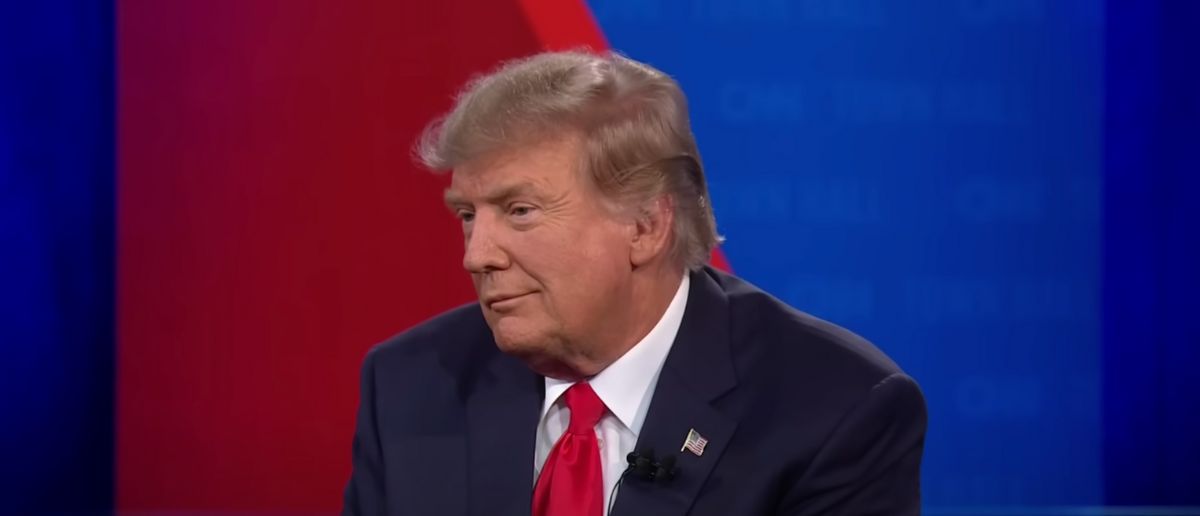
Trump has made it clear what his agenda is. Put America first and stop Democrat scheming.
Now Democrats are in hysterics after Trump threw a massive wrench in their plans.
The Trump administration is taking bold steps to redirect tens of millions of dollars, pausing funds to Planned Parenthood clinics that offer contraception, STI testing, and other health services to low-income Americans.
This move signals a shift in priorities, focusing on aligning federal spending with the president’s vision.
On Monday, nine Planned Parenthood state affiliates tied to the 55-year-old Title X family planning program received notices—shared with POLITICO—stating their funding is being “temporarily withheld.”
The notices flagged “possible violations” of federal civil rights law and President Donald Trump’s executive orders, including rules against promoting diversity, equity, and inclusion initiatives and “taxpayer subsidization of open borders.”
The administration’s letter to these affiliates, many in Republican-led states, zeroes in on Planned Parenthood’s own words—mission statements and public documents emphasizing a “commitment to black communities”—as proof they’re out of step with Trump’s directives.
Amy Margolis, deputy director of HHS’ Office of Population Affairs, didn’t mince words: the materials “paint a picture of Planned Parenthood that suggests it is engaged, across its affiliates, in widespread practices across hiring, operations, and patient treatment that unavoidably employ race in a negative manner.”
The letter also took aim at the group’s services for undocumented immigrants, noting that Planned Parenthood “overtly encourages illegal aliens to receive care,” prompting the funding freeze.
HHS is giving Planned Parenthood a tight 10-day window to prove it can fall in line with Trump’s executive orders. After that, the agency will decide whether to suspend or terminate the grants entirely.
One affected affiliate, Planned Parenthood of Great Northwest, Hawaiʻi, Alaska, Indiana, Kentucky, which runs 33 health centers across six states, is feeling the heat. CEO Rebecca Gibron warned in an interview that “patients will suffer” if the money doesn’t flow again soon.
“Cutting Title X funding for Planned Parenthood affiliates will only drive up people’s health care costs, or, frankly, prevent them from accessing health care at all,” she said, hinting at legal pushback. “They want to shut down Planned Parenthood health centers to appease their anti-abortion backers, and they’re willing to take away birth control, cancer screenings and STI testing and treatment to get their way.”
Other Title X providers got hit too—late last week, over the weekend, and into Monday—with notices about their 2025 funding. Some saw their requests slashed by more than half, while others, like Essential Access Health in California, got nothing at all.
HHS spokesperson Andrew Nixon framed the crackdown as a matter of principle, noting the agency is holding back payments to 16 Title X providers, including the nine Planned Parenthood affiliates, “to ensure these entities are in full compliance with Federal law and applicable grant terms, and to ensure responsible stewardship of taxpayer dollars.” Nixon revealed last week that $27.5 million of Title X’s $200 million-plus annual budget is currently frozen and under scrutiny.
Clare Coleman, CEO of the National Family Planning and Reproductive Health Association, which represents most Title X providers, pushed back in an interview, arguing the administration’s approach feels like a setup. She pointed out that these groups applied for funds under Biden, when “health equity was a core priority,” before Trump took office and issued his orders. Now, their earlier focus on diversity is being held against them.
“The administration would have been well within its rights to say, ‘We have a new president with new priorities, so we’re going to give you 30 days, 45 days, even just two weeks, to amend your application,’” Coleman said. “If you want public health programs to comply with the president’s stated priorities, you give them a fair chance to demonstrate compliance, and if there are entities that refuse to demonstrate compliance, then that’s on them.”
Gibron went further, calling the administration’s sidestep of formal rulemaking—which typically invites public input—“undemocratic and potentially unlawful.” “Creating chaos and confusion and anxiety is the point,” she said. “This is similar to what we have been seeing since inauguration of Trump — a billionaire running the federal government and making decisions that impact people’s lives.”
Health policy watchers say these cuts could hit harder than Trump’s first-term restrictions, especially with Roe v. Wade overturned in 2022. Back then, Trump’s team barred Title X providers from abortion referrals and required separate facilities for abortions, while opening the door to faith-based groups that skipped condoms or hormonal birth control.
More than a dozen grantees, running over 900 clinics, walked away from Title X in protest—including 11 state health departments and all Planned Parenthood affiliates.
HHS data shows the fallout: in 2019, the program served 844,083 fewer clients than the year before, with steep drops in access to oral contraceptives (225,688 fewer), hormonal implants (49,803 fewer), and IUDs (86,008 fewer).
Biden reversed those rules in 2021, but Coleman says the damage lingers. HHS’s 2023 audit pegged Title X’s reach at 2.8 million people—well below the 4 million it served annually when Trump first took office in 2017. With this latest move, the administration seems intent on reshaping the program once more, this time with an eye on efficiency and accountability.





